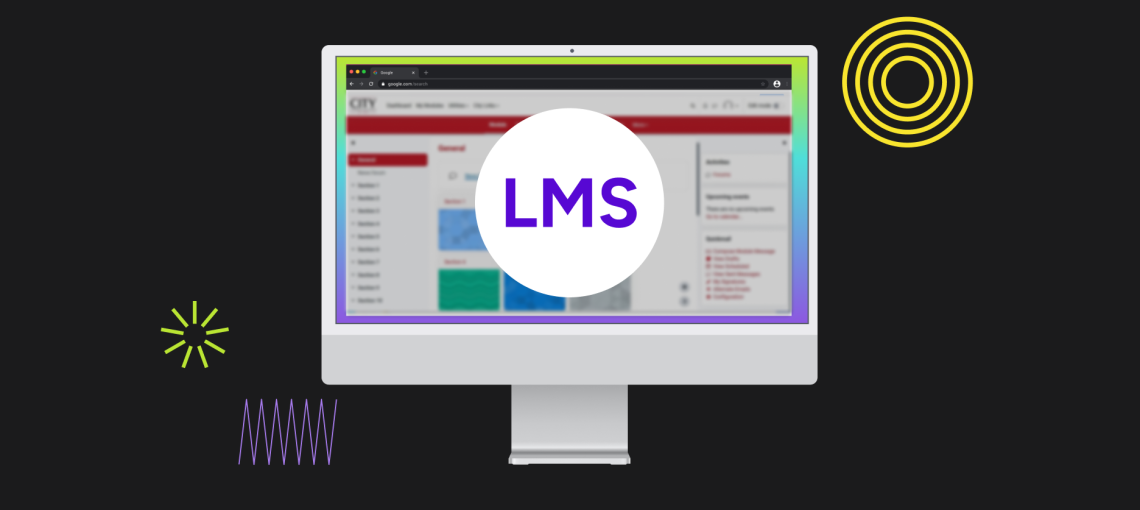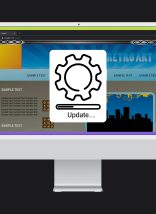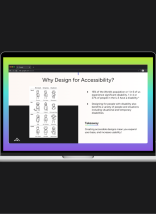As the e-Learning space grows in popularity, businesses are finding ways to increase the effectiveness of their learning platforms. Furthermore, this rising popularity kickstarted a race to meet user expectations. According to e-student.org:
Today’s educational landscape is going through a revolution unlike any we’ve ever seen before. The e-learning industry growth statistics aren’t showing any signs of slowing down, and the corporate e-learning sector is expected to grow by as much as $38 billion from 2020 to 2024. The largest EdTech companies such as Coursera are already valued at well over $1 billion, and they will be the driving force of the entire online education industry.
Making e-learning as easy and enjoyable for users as possible improves online engagement, helps garner positive reviews and word of mouth, and ultimately boosts user retention and success. Designing a strong LMS experience ensures a higher quality product.
8 key tips to improve retention and keep the attention of learners.
1. Use small slices of content.
Studies have shown that “microlearning,” or breaking content up into modules, improves the learning experience in the following ways:
- Better holds people’s attention
- Increases information retention
- Improves speed and efficiency in test-taking
When breaking content up into digestible pieces, subjects retained 20% more information than their peers who learned in longer blocks of content. In addition to higher test scores, the “micro learners” completed their tests 28% faster.
2. Implement quizzes throughout a course.
Quizzes do much more than tell you whether or not you get the gist of the information. They can help people decipher what they actually know from what they thought they knew, allowing them to diagnose and fix their weaknesses.
3. Make it easy to backtrack and find information.
Once you are quizzed, you’ll have to go back and improve retention for specific information. It’s important to make sure courses are organized appropriately. Not only is it essential to use shorter modules, but there should also be a user-friendly roadmap or table of contents to point learners to the right information easily.
For example, the Google Academy Advanced Analytics course is broken up into easy-to-find units and lessons. Within each lesson, it’s easy to navigate throughout different elements and find your place highlighted in orange.
4. Track progress to stay organized and boost motivation.
While traditional progress trackers can help learners plan and manage their time, this format is most effective in a sequential (or linear) learning model.
When information is organized in a way that users can skip what they already know, a checklist format will be more helpful.
5. Include multi-device learning options.
Offering mobile options helps people learn on the go, or wherever they feel like it. Some people prefer learning while waiting at the DMV to sitting down at a computer. Regardless, mobile-friendly courses help you meet users at their convenience, wherever they choose.
6. Reduce frustration in the learning experience.
According to Stanford University research, learners retain information best when they are in a state of “relaxed alertness.” For this reason, it’s important to make sure an online learning experience is simple, easy-to-use, and fast.
Google released that 53% of mobile ad clicks immediately exited when load times exceeded 3 seconds. Likewise, 47% of consumers expect a page to load in 2 seconds or less.
Although these stats pertain to conversion behavior, the theme is apparent. Page speed is a key factor in providing a pleasant experience and meeting user expectations.
7. Implement gamification.
Gamification doesn’t have to be complicated starting out. Leaderboards, badges, and point systems can help establish a motivational system of subtle rewards. Studies have also proven that gamification can produce endorphins, which help us learn. Elearningindustry.com states:
When we participate in activities that stimulate our bodies or minds, such as exercising, our body releases a hormone known as endorphins. The same effect can be achieved by playing eLearning games that challenge learners or give them the chance to achieve a particular reward, even if that reward is something as simple as moving onto the next level.When these endorphins are released, the learners not only have more fun during the eLearning process, but they actually retain more information.
8. Prioritize accessibility.
Providing a website that serves disabilities can help improve learning experience, broaden your audience, and improve UX for any user. For example, something as simple as keeping color contrast in compliance with 508 can make a website easier for anyone to read.
Having an accessible interface is a good idea to stay ahead of the competition and prevent any lawsuits.
Rely on a team experienced in LMS design.
These key features of an LMS enhance learning by improving product quality, helping you stay ahead of the competition, and unlocking new revenue opportunities.
Need help strategizing for your new or existing e-learning platform? Contact us for a free consultation to get started.







